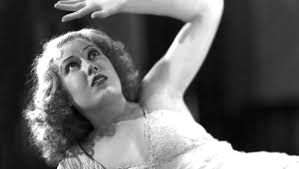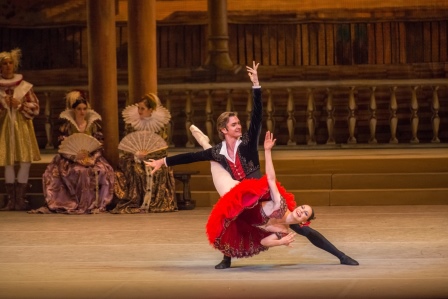Alexei Ratmansky‘s Swan Lake was always going to contain moments which stood out. Swan Lake is perhaps the ballet one comes to know best as a ballet fan, and is perhaps the text most in people’s minds when they think “Ballet”. Any changes to the text or story will stand out, diverging from one’s favoured version or favourite moments. One watches these revisions for those moments of surprise, and to enjoy a work successfully and consistently executed with artistic integrity and vision. (Perhaps secretly we hope to see that really “it was better in the old days” too?)
The work was indeed consistently executed by the leads and corps of Zurich ballet, to a good standard – of whom more later – however the text drew attention to itself, and not altogether to the benefit of the full dramatic picture.
Evolution tends towards gradual modification for continued success (if not full “survival of the fittest”) and in art no less is true. In the course of a theatre artwork’s life there might have been a paring down or amplification of drama, a change of artistic cadence, dramatic tension, or other alterations which bring either beauty or narrative clarity to the piece. Ideally both. Not all artworks are untouchable, and ballet since the mid-Nineteenth century has been palimpsest rather than Authorised Version. (One imputes authority to where one wishes to set store by it.)
With Swan Lake, no less is true. Any choreographic adjustments to fit those intents will have been inherited by us – around one hundred and ten years remove from the first (revival?) performance of the work. Revisions since 1895 may have been due to personal presence of any dancer (“I’ll just do a penché arabesque here, Mr Petipa? or perhaps a bourée here?”) and may too have been to the betterment of drama. What we are used to, is let’s face it, a text which feels standard, and which works well and is largely recognisable from Birmingham in the UK, to London, to New York or Paris or Milan. The story and process of the ballet don’t vary too much.
What does this revised, reconstructed work lose and gain? It loses more than it gains.
It clutters the crucial Act I Scene II pas de deux with many Swan Maidens, and I could not help thinking of The Trocks’ Benno (Andrei Cozlac), who (Trocks-style) catches Odette in those famous trust falls I so enjoy, which here are thus absent. What should be intimate and loving here feels instead like eavesdropping. With an audience on-stage, the romance becomes public and our private thoughts on love – as a private pairing – grumble slightly. The mind cannot quite countenance a display of undying love unfolding with Siegfried’s mate and Odette’s girlfriends in tow.

Kapitonova and Jones as Odette and Siegfried.
It also seems the 19th century predilection was not to dispose of dancers by filtering them into the wings to leave the stage clear for feats of balletic grace, but to use them as living frames, on three sides of the stage. In Act I, left, rear, right of stage was full of lines of bobbing heads, fifth position arms going up and down, changing postures of boys and girls while the Pas de Trois capered away. Admittedly this in fact links well with Ivanov’s same use of Swan Maidens in the white acts, and it is to Ratmansky’s credit to have through-composed this use of corps de ballet throughout. I imagine in an era before film that these pictures of a full stage in synchronisation were vivid and impressive. To modern eyes, and perhaps purposefully (or successfully?) so, they seem quaint.
A little more fatally, Ratmansky’s rehabilitation of Sergeyev’s notated version means that Siegfried’s character reverts back to a supporting role, rather as he would have been at the time the ballet was written. Hints of his interior world – whether through acting or dancing, are noticeably absent, and this absence was keenly felt. As such his hope when finding revelation of Odette that his subconscious prayers have been answered, seemed less moving and the romance as a whole felt distant.
For those who are interested, herewith a catalogue of specific changes:
The maypole and stools from the now defunct Royal Ballet Swan Lake (they share the same reference text) were present, but the use of stools rather limited. If anything these variances from our known productions show how much was not recorded in the Sergeyev Collection’s archives. Clapping here was loud and rumbustious and streamers dropped from the maypole charmingly. The villager boys did little almost mincing bourees and “running on the spot” reminiscent of the famous four cygnet routine later on.
Odette’s evasive pirouettes timed to Tchaikovsky’s music were not in evidence. Instead at those moments, she stood like a 1920s silent movie star, hand on brow, one hand outstretched as it to say “oh no! away!”.

Fay Wray or, Odette vs. Siegfried
This was storytelling which stressed human feelings: Odette as woman, not chimera. It was lighter in poetic ambition, knowing itself to be a fairytale and as such it seemed to be asking for our indulgence. No longer was Odette a swooning naif, an ethereal creature doomed by cosmic forces, punished by cruel magic. She was just a princess. It felt odd.
The Swan Maidens have poinytails and little headpieces. Their tutus are older fashioned and there’s white feathers all over. This device makes them seem – as with Odette – more woman, than otherworldly creature. Their hair flops around. There’s little ghostly serenity, they’re more like Busby Berkeley than beautiful birds.
Odette doesn’t transform into a swan at the end of Act I, Scene II, and flutter her arms in lush Vaganova wings facing or away from the audience. She is borne away by Rothbart, abducted as if a slave in a harem.
Siegfried doesn’t “discover” Odette before the Pas De Deux, nor lean over and unfurl her wings. She just walks on-stage from the wings.
Odile’s variation breaks not with Odile appearing to confront/kiss Siegfried but with her grasping his knee and doing a deep arabesque. She ended the variation with curious brises and a chain of echappés. The act also contained a male variation for Siegfried I had not seen before.
Sets seemed oddly clean cut and austere, almost too modern and out-of-place. Jérôme Kaplan’s costumes were, happily, lovely.
There was, as one can see, much I noticed absent. And yet, some joys too*.
Of the dancers, the standard was high. Viktorina Kapitonova‘s feet were pinprick sharp at the end her white act variation, tempi swift. Her Odile was a striking contrast to her Odette. Alexander Jones was a gallant partner, but if only he had been given more space to, yes, emote!
Noteworthy was Giulla Tonelli‘s dancing in pas de trois. There were assemblies of steps which demanded speedy precision. Some of these were new to me, and she sailed through them with charm. So too Yen Han tackled the writing with appetite.
The Neapolitan (Meiri Maeda, Wei Chen, Lou Spichtig, Christopher Parker, Giulla Tonelli, Surimu Fukushi, Marie Varlet, Shlomi Miara) started rather leaden, but this was misdirection. Ratmansky’s revision allowed for a thrilling, breakneck accelerando under Rossen Milanov‘s baton, the dancers keeping up with no problem.
The final Act was perhaps Ratmansky’s investment bearing best fruit. Odette is framed by her maidens, as if a stone in jewelled lozenge setting. The picture of arms and sorrow beautiful.
The “storm building” music was absent, Siegfried ran on-stage without any musical build-up. This anticipation and subsequent poetic music of his entrance is for me one of the best moment in the whole ballet and I regretted it was not here.

Odette framed by her maidens. (C) needed.
Yet after this, the drama went from slow bubbling brook to a surging torrent. The doomed lovers embraced to a cymbal crash, and Odette resolved to die. The tug of love and desperation was definitely tear-jerking and I have not seen this tragic deliberation done so powerfully before. I was truly caught in the reality of their fairytale fate. Those moments redeemed the whole show. It was as if here Ratmansky was free to give a modern voice to the work, and if it was really as the ballet was danced in the Nineteenth century, then sensibilities don’t change, and the heart is constant, from city to city, and time is nothing. The poets know this.Here, Ivanov’s poetry sang.
Ratmansky’s Sleeping Beauty succeeded, I think, because it is a happy story and because it is not a narrative ballet throughout. Swan Lake cleaves to a traditional form of drama as lesson and journey (or just plain story) whereas Sleeping Beauty knows itself to be (in the kindest, most gorgeous sense,) beautiful frippery. Beauty bore the revisions better by wearing them more lightly.They weighed this Lake down a little.
Swan Lake matters, and Ratmansky respects it. He may have undertaken this ballet with the intent to do full justice to Sergeyev, Petipa, Ivanov. I just think that “historically consistent” may not be as enjoyable to modern eyes. As a reconstruction it has merits: as a proclamation of aesthetic dissent (in its demands for lower legs, less acrobatics, more demure dancing) the same. As a project wholesale its rewards were for me, mixed.
NOTE:
- And a disappointment. For all this ceaseless chasing of the mimetically Nineteenth Century, that there was shown a video Odette boureeing in pain, when Siegfried swears love to Odile. Such a shame.







